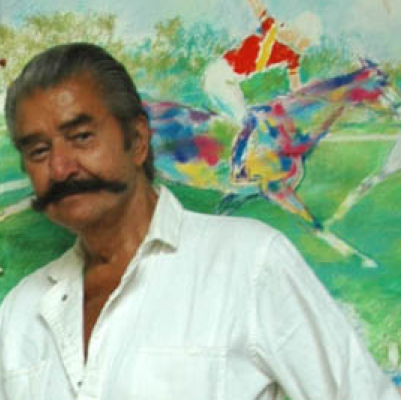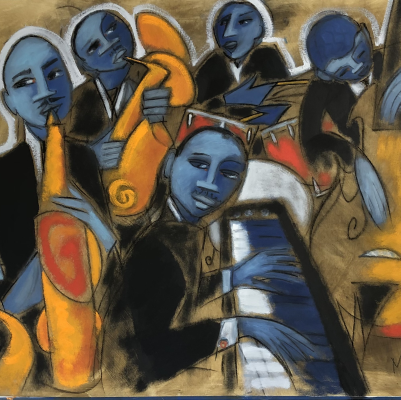Criminal Subjects
Stephen Harper,
Canada’s Prime Minister,
advises his people
not to commit
acts of sociology.
Harper Stevens,
Canadian waiter,
brings his calculator
everywhere he goes,
knowing that arithmetic’s
the greatest crime of all.
Walter (not Cronkite)
Walter (not Cronkite)
works at his desk,
waits for incoming news.
Connie (not Chung)
reports by smartphone
that there is gridlock
in the Lincoln Tunnel.
Dan (not Rather),
reports by cellphone
that New York’s heat rises,
now just over 95.
The Postmodern Cattle
The postmodern cattle,
in the stockyards district,
peer through the transport’s slats.
Most abattoirs are gone,
replaced by big box stores.
They gape and wonder
if they’re shipped to market
or merely going shopping.
The New Economic Dislocation
From the ruins of Ohio
to the boom of Texas,
young Buckeyes relocate,
walk the streets of Laredo.
Disparity in River City
THE MUSIC MAN (1962):
Robert Preston,
the picture’s star,
extols “76 Trombones”,
spots “Trouble in River City”,
earning immortality in the process.
Co-star Buddy Hackett,
sings his number,
repeating “Shipoopi”,
losing his audience.
The Sound of Status
The sound of status
is the all-but-silence
coming from the Prius.
Sweeping past the Exxon,
only subtle implication
makes the telling point
aimed at angry drivers,
struck by gas-pump shock.
For John Cusack
In the Eighties,
Hollywood gave
its younger men
several choices:
Young doctors,
young lawyers,
smarmy guy in a suit.
In the Forties:
Young soldiers,
young cowboys,
goofy teen in a jalopy.
That’s showbiz!
Non-Prescription
Little Jeremy Duncan,
Shoppers Drug Mart trainee,
lists the Heinz Baked Beans
as “non-prescription flatulent”.
Poetry Appreciation
Sensitive men watch SYLVIA,
develop an appreciation
for Sylvia Plath’s verse.
Insensitive men watch SYLVIA,
develop an appreciation
for Gwyneth Paltrow’s butt.
Pets for Lions for Dinner
No pets in the safari park,
your shepherd dog is not that tough.
Believe the owners when they say
their pride of lions eat enough.
Emily Dickinson in the Twenty-First Century
Emily Dickinson,
American poet,
literary icon.
Role model?
Probably not.
For the straight men,
way beneath their dignity.
For the women,
very retrogressive.
Even the drag queens
don’t dress up as her.
Congressional Succession
Another Congress-
Speaker Boehner
follows Speaker Pelosi.
A Botox joke,
followed by a crying jag.
“…Only Following Orders!”
“I was only following orders!”,
cried the Nazi titans
facing Allied justice,
each passing the buck
to a deceased Hitler.
Why the Bear Came to Town
The straying bear was not, I guess,
a victim of the sub-prime mess.
We all know that no one dares
to foreclose on a bankrupt bear
A Great Country or What?
I have never seen
Survivor, The Amazing Race,
nor Keeping Up With the Kardashians.
I saw – on YouTube –
Mr. Peepers, Our Miss Brooks,
even Playhouse 90.
Clever current technology
provides an alternative to
crappy contemporary culture.
Booze and Breakfast Beverages
Drink liquor-spiked
hot chocolate at Holt’s,
you’re au courant,
a bon vivant.
Dump Old Grand-Dad
in your morning Nestle’s Quik,
you’re just a boozer,
a drunken loser.
A School of Thought
In Hollywood,
there still exists
a school of thought
which asserts that
“All publicity
is good publicity.”
Arnold Schwarzenegger
and John Travolta
have both dropped out,
a long time ago.
Bill Clinton in the 21st Century
Thank you, Bill Clinton,
for building a bridge
to the 21st century.
Now we are all stuck
and none of us
will get out alive.
Career Trajectories
Gardner McKay
was on his way.
That cute brunette?
Not famous yet.
Gardner McKay
had lost the way.
That cute brunette?
Suzanne Pleshette.
Divine Directions
South of Heaven,
east of Eden.
Those who explore
the divine cosmos
ask theologians
for the directions.
The Snide Carnivore Replies
“Why love one and eat the other?”
– Toronto Vegetarian Association subway ad
Why love the one
and eat the other?
You have to ask?
Oh really, brother?”
Just get a clue,
you uptight yuppie!
The pig tastes better
than the puppy.
No Solicitation
“No Solicitation”
If the sign
on the locked gate
does not convey the message,
the loose handrail
on the wooden staircase
should do the trick.
Macho Men in Make-Up
Steven Seagal,
’90s action hero
and Chris Noth,
’90s TV cop,
advertise men’s make-up
in slick downtown ads.
Laugh, if you must —
but only behind their backs.
Remember, that even so covered,
they can still kick your ass.

































